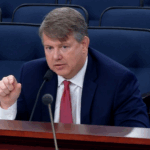On July 1, 2024, changes to the Georgia Direct Action Statutes, O.C.G.A. § 40-1-112 and O.C.G.A. § 40-2-140, went into effect and limited the circumstances under which a plaintiff can assert a direct-action claim against an insurer of a motor carrier in Georgia.
Georgia law previously permitted direct actions against insurers of motor carriers for any claim in tort or contract. Georgia courts have held that a plaintiff with a claim in tort or contract against a motor carrier could assert a claim against the insurance carrier without naming the insured motor carrier or driver as a defendant. Now that the statutory change has gone into effect, an insurer can only be added as a party defendant under two circumstances: when the motor carrier is insolvent or bankrupt or when service cannot be executed against the driver or motor carrier after reasonable diligence.
Importantly, if the motor carrier is insolvent or bankrupt, or if service cannot be executed against the driver or motor carrier, then the insurance carrier may be joined in the action as a matter of right. The plaintiff would not have to file a motion or obtain a court order. The plaintiff only needs to file an amended complaint joining the insurance carrier and serve the amended complaint on the insurance carrier. Additionally, the amended complaint must relate back to the date of filing of the original pleading. The plaintiff is not required to show proof of insolvency or reasonable diligence in perfecting service before adding the insurer to the lawsuit.
This is concerning because reasonable diligence is usually determined by the court based on the facts of the case. Further, the statutory amendment is silent on how to dismiss an insurer from the action if the driver or motor carrier is later served. Therefore, it is possible that a single failed attempt to serve the motor carrier or driver would result in the insurance carrier getting added to the complaint, with no clear mechanism for the insurance carrier’s dismissal.
Immediate Impact of Statutory Change
 For the most part, the statutory change will be advantageous to insurers operating in the trucking space as it decreases costs and exposure. The ability to name the insurance carrier as a defendant in the action put the carrier on the caption, which signaled to the jury that there is insurance available to pay for the claims being asserted by the plaintiff. This often results in higher verdicts in trucking cases, especially in more liberal counties. Further, if the plaintiff asserts punitive damages against all defendants, separate counsel would need to be assigned for the insurer, which increases litigation expenses.
For the most part, the statutory change will be advantageous to insurers operating in the trucking space as it decreases costs and exposure. The ability to name the insurance carrier as a defendant in the action put the carrier on the caption, which signaled to the jury that there is insurance available to pay for the claims being asserted by the plaintiff. This often results in higher verdicts in trucking cases, especially in more liberal counties. Further, if the plaintiff asserts punitive damages against all defendants, separate counsel would need to be assigned for the insurer, which increases litigation expenses.
However, do not expect to see any change right away. The statute went into effect on July 1, 2024, and applies to causes of action accruing after that date, meaning accidents occurring after July 1, 2024. If you are currently handling a claim where the accident occurred on June 30, 2024 or earlier, those are still subject to the prior law. Therefore, we can expect insurance carriers to be named as defendants in bodily injury lawsuits filed through June 30, 2026[2] and in property damage lawsuits filed through June 30, 2028[3]. This timeline could extend further if any tolling provisions are applied to extend the statute of limitations (such as the criminal prosecution tolling statute (O.C.G.A. § 9-3-99)).
What Strategies Should Insurers Implement Going Forward?
The most important thing for an insurer to do is gather information that allows the insurer to assess any risks that could trigger a direct action claim or that could impact certain claim handling decisions, such as whether to accept a pre-suit demand or when to engage outside counsel. We recommend the following:
- Maintain a line of communication with your insureds, both the drivers and motor carriers. This not only keeps them engaged in the outcome of the claim, but it also allows you to confirm that you have updated contact information for the insureds.
- Confirm and request updates on the driver’s employment status. Too often, when a driver leaves a motor carrier, they refuse to cooperate in the defense because they assume their duty to participate in the defense stops when their employment ends. While this has historically presented an issue during litigation, the ability of a plaintiff to assert a direct action against an insurance carrier simply because the plaintiff cannot serve a driver presents another concern.
- Obtain secondary contacts for the insured drivers, preferably a relative who is local and is able to reach them. This information may be found in a driver’s personnel file depending on the motor carrier’s records policy, but we recommend obtaining this information directly from the driver to ensure the information is correct and up to date.
- Investigate signs of possible insolvency or bankruptcy, such as insurance nonrenewal or lost operating authority. Keep in touch with underwriting to verify if the insurance has been nonrenewed or canceled. This could suggest that the insured either deliberately canceled their policy due to business closure or that they are having issues obtaining insurance, which could impact their ability to operate. Monitor the Department of Transportation website to determine whether the motor carrier has maintained its operating authority. Even if the operating authority is lost temporarily, the downtime could lead to a motor carrier becoming insolvent. There is nothing an insurer can do to prevent insolvency and bankruptcy, and underwriting decisions regarding renewal should not be made on the basis of preventing a direct action claim. However, if the insurer obtains information indicating that the motor carrier is insolvent, it could impact claim-specific decisions, such as whether to accept a demand.
- Contact the insured and engage outside counsel after you deny a demand or when the claim is six to eight months away from the statute of limitations. This is the time we would expect a suit to be filed if the claim was not resolved. Outside counsel can monitor the dockets for suit filing and promptly notify the insured to be on the lookout for service. Updating the insured will put them on notice that a suit may be imminent and remind them of their duty to cooperate and to notify you once a suit is filed. Having multiple lines of communication with the insured – from the insurer and outside counsel – should help avoid any issues related to serving the insured.
Gillian S. Crowl-Parrish is a partner with the Swift Currie law firm in Atlanta. She practices in the areas of commercial litigation, trucking litigation, catastrophic injury, wrongful death, insurance coverage, premises liability and bad faith litigation.
Related: Lyft is a Motor Carrier and State Farm Can be Sued Directly, Georgia Appeals Court Says
Was this article valuable?
Here are more articles you may enjoy.



 Update: Airbus, Air France Reject Blame Over AF447 Crash, After 16 Years
Update: Airbus, Air France Reject Blame Over AF447 Crash, After 16 Years  Hedge Funds Targeting Fire Insurance Hit a Wall in California
Hedge Funds Targeting Fire Insurance Hit a Wall in California  US Tariffs on Heavy Truck Imports to Begin Nov. 1, Says Trump
US Tariffs on Heavy Truck Imports to Begin Nov. 1, Says Trump  Laws and Regs Already Protect Insureds From AI Missteps, Insurance Reps Say
Laws and Regs Already Protect Insureds From AI Missteps, Insurance Reps Say 

